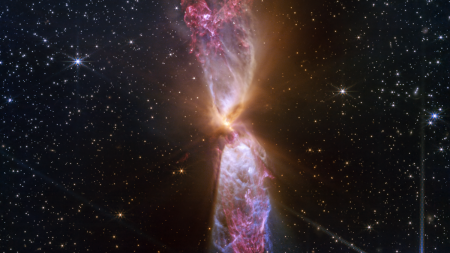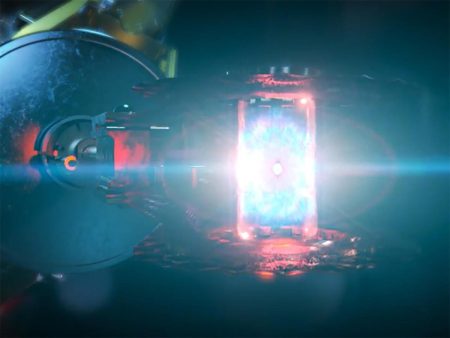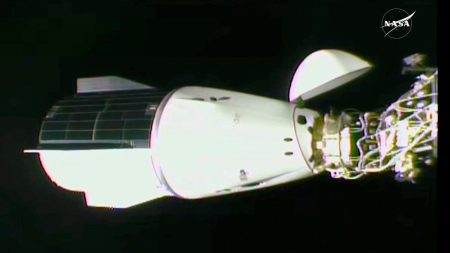NASA’s James Webb Space Telescope to Study Potentially Hazardous Asteroid
A New Threat in the Cosmos: Asteroid 2024 YR4
In December 2024, astronomers detected a new asteroid, formally named 2024 YR4, which has captured the attention of space agencies worldwide. This asteroid, characterized as a "city-killer," carries a 2% chance of striking Earth on December 22, 2032. While the odds of an impact are relatively low, the asteroid’s potential consequences have prompted NASA and the European Space Agency (ESA) to monitor it closely. The asteroid’s size is estimated to be between 40 and 90 meters wide, making it a significant threat if it were to hit a populated area.
The asteroid’s risk assessment has evolved since its discovery. Initially, the ESA estimated a 1% chance of impact, but by the end of January, NASA’s Jet Propulsion Laboratory revised this figure to 1.6%. Despite these updates, scientists caution that the current risk estimates may be exaggerated due to uncertainties in the asteroid’s size and trajectory. The ESA emphasizes the importance of refining these estimates, as the potential damage from a 40-meter asteroid is vastly different from that of a 90-meter one.
The Potential Impact of 2024 YR4
If 2024 YR4 were to strike Earth, the effects would be localized but devastating. The asteroid has earned a Level 3 rating on the Torino Impact Hazard Scale, a rare distinction that signals a "close encounter" requiring public and scientific attention. An asteroid of this size impacts Earth approximately every few thousand years, and the consequences could include severe damage to a local region.
The potential impact zones identified by NASA include the eastern Pacific Ocean, northern South America, the Atlantic Ocean, Africa, the Arabian Sea, and South Asia. CBS News space consultant Bill Harwood warns that if the asteroid were to land in a populated area, the disaster would be catastrophic, though not on the scale of the asteroid that caused the extinction of the dinosaurs. Nonetheless, the localized impact could still be disastrous, making it essential to monitor the asteroid’s trajectory closely.
Monitoring the Asteroid: The Role of the James Webb Space Telescope
To better understand 2024 YR4 and refine its risk assessment, astronomers are turning to NASA’s James Webb Space Telescope (JWST). The Webb Telescope’s advanced technology will allow scientists to gather more accurate data about the asteroid’s size, which is currently a critical uncertainty.
Traditionally, astronomers rely on the visible light an asteroid reflects from the Sun to estimate its size, with brighter reflections suggesting larger asteroids. However, the Webb Telescope can measure the asteroid’s infrared emissions, providing more precise size estimates. This data will be crucial for predicting the asteroid’s trajectory and assessing its potential hazard.
The Webb Telescope will begin observing 2024 YR4 in March 2025, when the asteroid is at its brightest, and again in May 2025. After that, the asteroid will disappear from view until 2028, giving scientists time to analyze the data and refine their predictions about its path.
The Bigger Picture: Preparing for Asteroid Threats
While 2024 YR4 poses a low but nonzero risk to Earth, its discovery highlights the importance of asteroid monitoring and preparedness. The asteroid’s current risk assessment underscores the challenges scientists face in predicting the trajectories and sizes of near-Earth objects (NEOs).
The ESA and NASA are working tirelessly to improve their understanding of 2024 YR4, and the Webb Telescope’s involvement marks a significant step forward in asteroid research. By leveraging advanced technologies, scientists hope to reduce uncertainties and improve their ability to predict and mitigate potential asteroid threats.
In the coming years, continued monitoring of 2024 YR4 will provide valuable insights into the asteroid’s behavior and help scientists refine their models. Whether or not this asteroid ultimately poses a threat, its discovery serves as a reminder of the importance of vigilance and preparedness in the face of cosmic hazards.
Conclusion: Staying Ahead of Cosmic Threats
Asteroid 2024 YR4 is a stark reminder of the potential dangers lurking in our solar system. While the chances of an impact are low, the consequences of such an event could be dire, especially for localized populations. By utilizing cutting-edge tools like the James Webb Space Telescope, scientists are taking proactive steps to better understand this asteroid and others like it.
The study of 2024 YR4 not only enhances our knowledge of near-Earth objects but also strengthens our ability to respond to future asteroid threats. As we continue to explore the cosmos, the lessons learned from this asteroid will play a critical role in safeguarding our planet and ensuring we are prepared for whatever the universe may throw our way.









